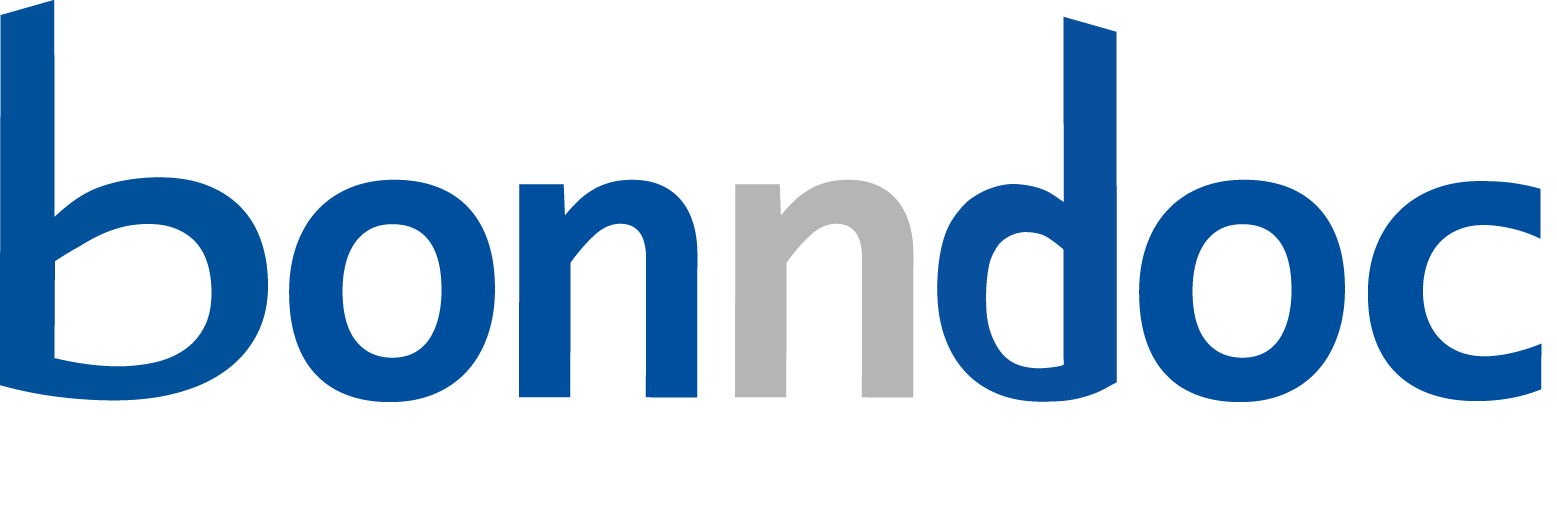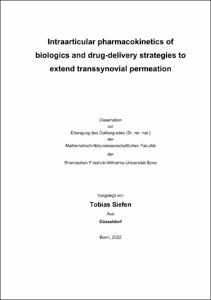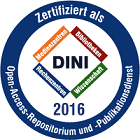Siefen, Tobias: Intraarticular pharmacokinetics of biologics and drug-delivery strategies to extend transsynovial permeation. - Bonn, 2023. - Dissertation, Rheinische Friedrich-Wilhelms-Universität Bonn.
Online-Ausgabe in bonndoc: https://nbn-resolving.org/urn:nbn:de:hbz:5-69695
Online-Ausgabe in bonndoc: https://nbn-resolving.org/urn:nbn:de:hbz:5-69695
@phdthesis{handle:20.500.11811/10651,
urn: https://nbn-resolving.org/urn:nbn:de:hbz:5-69695,
author = {{Tobias Siefen}},
title = {Intraarticular pharmacokinetics of biologics and drug-delivery strategies to extend transsynovial permeation},
school = {Rheinische Friedrich-Wilhelms-Universität Bonn},
year = 2023,
month = feb,
note = {A local injection is often considered the only appropriate route of administration for active pharmaceutical ingredients that cannot cross biomembranes easily or that are not sufficiently stable in the gastrointestinal tract and therefore do not reach their site of action in the required quantity. Intraarticular injections provide the opportunity to deliver biologics directly to their site of action for a local and efficient treatment of osteoarthritis. However, the synovial joint is a challenging site of administration since the drug is rapidly eliminated across the synovial membrane and has limited distribution into cartilage, resulting in unsatisfactory therapeutic efficacy. In order to rationally develop appropriate drug delivery systems, it is essential to thoroughly understand the unique biopharmaceutical environments and kinetics in the joint to adequately simulate them in relevant experimental models. In this context, the estimation of joint residence time of a drug is one of the key requirements for rational development of intraarticular therapeutics. There is a great need for a predictive model to reduce the high number of animal experiments in early-stage development. In this work, a Franz-cell based porcine ex-vivo permeation model is proposed, and transsynovial permeation of fluorescently labeled model substances in the range of potential drug candidates have been determined. In addition, an inflammatory model was assessed for its effect on permeation of solutes. Size-dependent permeability in varying degrees of synovitis-like inflammation was observed for the analytes, whereby synovial inflammation led to a reduced size selectivity of the synovial membrane. Besides offering biorelevant insights into articular pharmacokinetics this work aims to reveal how this knowledge can be transferred into designing rationally derived formulation strategies to affect the joint residence time using the anti-inflammatory biologic adalimumab as an example. Polymer-based formulations present an attractive strategy for the intraarticular drug-delivery to refrain biologicals from early leakage from the joint. In this study, co-formulations of hyaluronic acid and polyvinylpyrrolidone were investigated for their potential as viscosupplements and their influence on the transsynovial loss of adalimumab. For this purpose, the polymer mixtures were evaluated for their viscosity and elasticity behavior and their potential to restore the rheological properties of the synovial fluid over the range of joint motion while at the same time assessing their influence on the permeation of adalimumab across a porcine ex-vivo synovial membrane was determined. The formulations showed significant influence on transsynovial permeation kinetics of adalimumab and hyaluronic acid, which could be decelerated up to 5- and 3-fold, respectively. Besides viscosity effects, adalimumab was retained primarily by an electrostatic interaction with hyaluronic acid. Moreover, polymer-mediated stabilization of the antibody activity was detected. In a second drug-delivery approach, the biopharmaceutical environment of the joint space was exploited via positively charged nanocomplexes. The extracellular matrix of the synovium consists of a collagen network with enmeshed aggrecan galactosamine glycans, generating a high fixed negative charge density. By linking adalimumab with different molar equivalents of cationic diethylaminoethyl-dextran using avidin mediated nanocomplexes, the flux through porcine synovium was significantly decelerated whereby immobilization in superficial tissue layers was revealed by confocal laser scanning microscopy. The prepared carriers exhibited excellent intra-tissue stability, while retaining antigen recognition of adalimumab. In addition, the nanocomplexes did not show any adverse effects on synovial cells, resulting in unchanged viability compared with adalimumab alone. To conclude, an ex-vivo permeation model has been successfully introduced as a tool that allows for biorelevant screening of drug release as well as pharmacokinetics at an early stage of development, that might narrow the gap between dissolution and in-vivo testing through enhanced understanding of material-tissue interactions. The approach thus enables researchers to observe, evaluate, and adapt the design of efficient and intelligent drug carriers directly within their biopharmaceutical environment.},
url = {https://hdl.handle.net/20.500.11811/10651}
}
urn: https://nbn-resolving.org/urn:nbn:de:hbz:5-69695,
author = {{Tobias Siefen}},
title = {Intraarticular pharmacokinetics of biologics and drug-delivery strategies to extend transsynovial permeation},
school = {Rheinische Friedrich-Wilhelms-Universität Bonn},
year = 2023,
month = feb,
note = {A local injection is often considered the only appropriate route of administration for active pharmaceutical ingredients that cannot cross biomembranes easily or that are not sufficiently stable in the gastrointestinal tract and therefore do not reach their site of action in the required quantity. Intraarticular injections provide the opportunity to deliver biologics directly to their site of action for a local and efficient treatment of osteoarthritis. However, the synovial joint is a challenging site of administration since the drug is rapidly eliminated across the synovial membrane and has limited distribution into cartilage, resulting in unsatisfactory therapeutic efficacy. In order to rationally develop appropriate drug delivery systems, it is essential to thoroughly understand the unique biopharmaceutical environments and kinetics in the joint to adequately simulate them in relevant experimental models. In this context, the estimation of joint residence time of a drug is one of the key requirements for rational development of intraarticular therapeutics. There is a great need for a predictive model to reduce the high number of animal experiments in early-stage development. In this work, a Franz-cell based porcine ex-vivo permeation model is proposed, and transsynovial permeation of fluorescently labeled model substances in the range of potential drug candidates have been determined. In addition, an inflammatory model was assessed for its effect on permeation of solutes. Size-dependent permeability in varying degrees of synovitis-like inflammation was observed for the analytes, whereby synovial inflammation led to a reduced size selectivity of the synovial membrane. Besides offering biorelevant insights into articular pharmacokinetics this work aims to reveal how this knowledge can be transferred into designing rationally derived formulation strategies to affect the joint residence time using the anti-inflammatory biologic adalimumab as an example. Polymer-based formulations present an attractive strategy for the intraarticular drug-delivery to refrain biologicals from early leakage from the joint. In this study, co-formulations of hyaluronic acid and polyvinylpyrrolidone were investigated for their potential as viscosupplements and their influence on the transsynovial loss of adalimumab. For this purpose, the polymer mixtures were evaluated for their viscosity and elasticity behavior and their potential to restore the rheological properties of the synovial fluid over the range of joint motion while at the same time assessing their influence on the permeation of adalimumab across a porcine ex-vivo synovial membrane was determined. The formulations showed significant influence on transsynovial permeation kinetics of adalimumab and hyaluronic acid, which could be decelerated up to 5- and 3-fold, respectively. Besides viscosity effects, adalimumab was retained primarily by an electrostatic interaction with hyaluronic acid. Moreover, polymer-mediated stabilization of the antibody activity was detected. In a second drug-delivery approach, the biopharmaceutical environment of the joint space was exploited via positively charged nanocomplexes. The extracellular matrix of the synovium consists of a collagen network with enmeshed aggrecan galactosamine glycans, generating a high fixed negative charge density. By linking adalimumab with different molar equivalents of cationic diethylaminoethyl-dextran using avidin mediated nanocomplexes, the flux through porcine synovium was significantly decelerated whereby immobilization in superficial tissue layers was revealed by confocal laser scanning microscopy. The prepared carriers exhibited excellent intra-tissue stability, while retaining antigen recognition of adalimumab. In addition, the nanocomplexes did not show any adverse effects on synovial cells, resulting in unchanged viability compared with adalimumab alone. To conclude, an ex-vivo permeation model has been successfully introduced as a tool that allows for biorelevant screening of drug release as well as pharmacokinetics at an early stage of development, that might narrow the gap between dissolution and in-vivo testing through enhanced understanding of material-tissue interactions. The approach thus enables researchers to observe, evaluate, and adapt the design of efficient and intelligent drug carriers directly within their biopharmaceutical environment.},
url = {https://hdl.handle.net/20.500.11811/10651}
}






